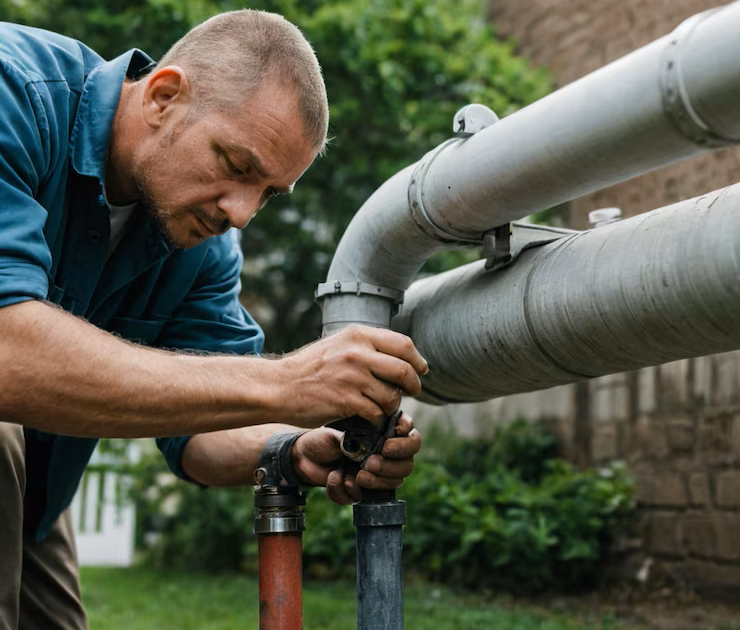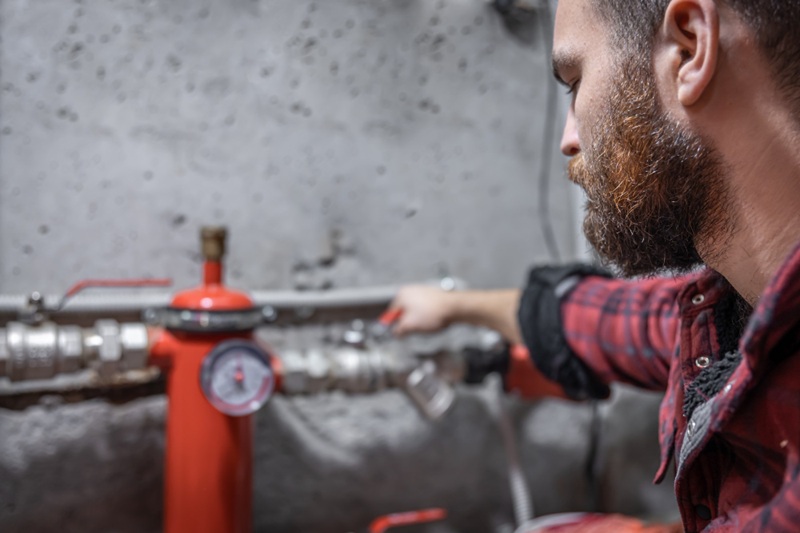Clean, safe water doesn’t happen by chance. It depends on a well-maintained plumbing system, reliable infrastructure, and one critical safeguard—backflow prevention. Without it, contaminated water from external sources can enter your supply lines and compromise your health and safety.
Contaminants like pesticides, sewage, and industrial waste can reverse-flow into your home’s water system during pressure drops or back-siphonage events. That’s why effective backflow prevention isn’t optional—it’s a key defense in protecting your home and public health. If you’re unsure whether your system is secure, a certified plumber in Lakewood CO can inspect and install the right prevention devices to ensure your water stays clean and safe.
But what exactly causes backflow—and how does it infiltrate your plumbing system? Understanding the source is the first step toward protection.

What Is Backflow and Why Does It Happen?
Backflow occurs when water flows in the reverse direction, moving from a potentially contaminated source into your clean water supply. It typically happens under two conditions:
- Back-pressure: When downstream pressure exceeds supply pressure, often due to pumps, boilers, or elevation changes.
- Back-siphonage: When negative pressure in the supply line pulls contaminated water into the system, often during water main breaks or high demand.
These events can introduce dangerous substances into your plumbing system. That’s why professional backflow prevention devices are required by code in both residential and commercial systems.
Common Contaminants Caused by Backflow
Without effective backflow prevention, your drinking water could become exposed to a range of hazardous materials, including:
- Pesticides from lawn irrigation systems.
- Fertilizers and animal waste from outdoor hose connections.
- Chemicals from industrial or commercial operations.
- Sewage due to cross-connections with drain systems.
These contaminants can lead to serious health issues, including gastrointestinal illness, respiratory problems, and long-term organ damage. Regular testing and inspection of your backflow devices are crucial to keep your home safe.
Types of Backflow Prevention Devices
Several devices are used to stop reverse water flow, and each serves a specific function. Here are the most common ones:
1. Air Gap
An air gap is a simple yet effective physical separation between the water outlet and the flood level of a fixture. It ensures there’s no direct connection between potable and non-potable water.
2. Reduced Pressure Zone (RPZ) Assembly
Ideal for high-risk connections, RPZ valves prevent contaminated water from returning to the supply by maintaining a zone of reduced pressure. They’re widely used in commercial and industrial applications.
3. Double Check Valve Assembly (DCVA)
This system includes two check valves that operate independently to block reverse flow. It’s commonly used in residential sprinkler systems.
4. Pressure Vacuum Breaker (PVB)
Designed for irrigation systems, a PVB prevents backflow by opening a valve when pressure drops, allowing air in rather than contaminated water.
A licensed plumber in Lakewood CO can help you select the right device for your property and install it to meet local code requirements.
Backflow Prevention and Local Plumbing Codes
Most municipalities, including Lakewood CO, require backflow prevention systems for homes and businesses. Annual testing by a certified technician is often mandated to ensure functionality.
Failing to comply with these regulations can lead to fines, service interruptions, and health hazards. Always work with a certified plumber in Lakewood CO who understands current plumbing codes and inspection requirements.
Signs Your Backflow Prevention System Needs Attention
A faulty backflow device won’t always show obvious symptoms. However, you should watch for:
- Unusual taste or smell in your tap water.
- Discoloration or sediment in drinking water.
- Leaks or moisture near your backflow device.
- Water pressure changes throughout your home.
These warning signs suggest a potential failure in your backflow prevention system. A prompt inspection can prevent widespread contamination.

Why Routine Maintenance Matters
Installing a backflow prevention device isn’t enough—it must be inspected and tested annually. Over time, components wear out, seals degrade, and valves can stick.
Certified testers use precision gauges to confirm that valves close correctly and maintain appropriate pressure differentials. This process helps:
- Ensure compliance with local codes.
- Detect early signs of wear or damage.
- Prevent emergency repairs or water contamination.
Partnering with a qualified plumber in Lakewood CO ensures your system receives thorough, code-compliant service.
Who Needs a Backflow Prevention System?
While most commercial properties are required to have backflow devices, many residential homes also need them. If your property includes any of the following, you may be required to install a backflow prevention system:
- Irrigation or sprinkler systems
- Swimming pools or spas
- Private wells
- Fire sprinkler systems
- Boilers or radiant heating systems
These systems pose a higher risk of backflow and must be isolated from the potable water supply with approved devices.
Hiring a Professional Plumber in Lakewood CO
Proper installation and testing of backflow prevention systems require specific certifications and tools. Hiring a professional plumber in Lakewood CO ensures:
- Correct device selection based on water usage and risk.
- Installation that meets both state and municipal codes.
- Accurate, documented test reports submitted to your local water authority.
- Peace of mind that your water remains safe year-round.
Don’t leave the safety of your water to chance—expert installation and timely maintenance are your strongest defenses.
Keep Your Water Safe with Backflow Prevention
Water contamination can have serious consequences, but you can prevent it with the right precautions. A reliable backflow prevention system keeps your drinking water free from harmful substances and meets local plumbing regulations. Whether you own a home or manage a commercial facility, backflow issues require immediate attention to protect both your health and your plumbing investment.
Let trained professionals assess your system, install the proper devices, and ensure your water remains clean and safe. When you’re ready to take that step, trust A Clear Choice Plumbing and Heating to handle the job with precision, experience, and local expertise. As a trusted plumber in Lakewood CO, the team specializes in comprehensive backflow solutions, including inspections, repairs, and installations that comply with all local codes. Known for fast response times, honest pricing, and dependable workmanship, they’ve built a reputation for quality service across the region.
Protect your water—schedule your backflow inspection with A Clear Choice Plumbing and Heating today.
